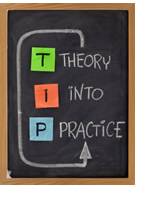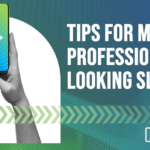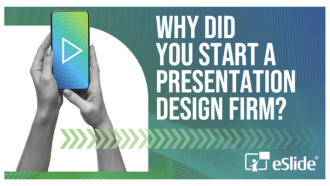5 Tips for a Better PowerPoint Presentation
 Winning over an audience is one of the keys to delivering a good PowerPoint presentation. Unfortunately, it’s also possible to accomplish the opposite.
Winning over an audience is one of the keys to delivering a good PowerPoint presentation. Unfortunately, it’s also possible to accomplish the opposite.
Here are some tips that everyone using PowerPoint should know to keep an audience at a conference room table engaged.
1. Consider the timing of the presentation when putting together your slides
Your audience’s time should be in consideration as you compile slides. Few things appear more unprofessional than a presentation that starts late and ends even later. Start your presentation on schedule and end within a set timeframe.
The best way to accomplish this is through practice. Rehearse in advance and time yourself so that you know how long each slide takes to get through. PowerPoint has a handy tool that enables you to track the amount of time. To use, click on the Rehearse Timings command on the Slide Show menu. You’ll be able to watch your time for each slide, as well as the overall PowerPoint presentation.
Also, make sure that your equipment works and that you know how to use it. Don’t make an audience wait while you tinker with the projector. Ensure ample set-up time, just in case something goes wrong.
2. Don’t overwhelm slides with information.
Busy slides that are packed with lots of small text are extremely hard to read. Quite simply, audiences won’t. To build a better PowerPoint that’s streamlined and simple, keep slides trim, interactive and engaging, using large text and images that illustrate the main point of each. Use your notes and the spoken part of the presentation to deliver the details.
Break up your slides if you have to. Having more slides that are easy to read will be more effective than just a few that are impossibly dense.
3. Explain everything.
Don’t assume that everyone is operating from a common base of knowledge. Take the time to define acronyms and abbreviations, as well as other complex topics, or risk losing your audience.
4. Repeat questions.
Unless you are in a very small presentation space, repeat every question posed to you. Others may have missed it or were unable to hear the question being asked. If the audience doesn’t know the question you are answering, your answer loses its value.
5. Keep the conversation flowing.
Avoid the following trap: Someone asks you a question, you answer, they counter with another question and the next thing you know, you have a back-and-forth dialogue with a specific member of the audience. Give people the opportunity to ask a question, and perhaps a follow-up. If the conversation goes beyond that, inform them that they can meet with you afterward for additional questions once your presentation is completed. Don’t let one person dominate the conversation or the other audience members will lose interest.
Audience engagement is the key to creating a better PowerPoint presentation. Death by PowerPoint isn’t inevitable. By delivering streamlined information in a well-timed presentation and being prepared to answer questions and facilitate conversation appropriately, you can create a PowerPoint presentation that is memorable and impactful.








